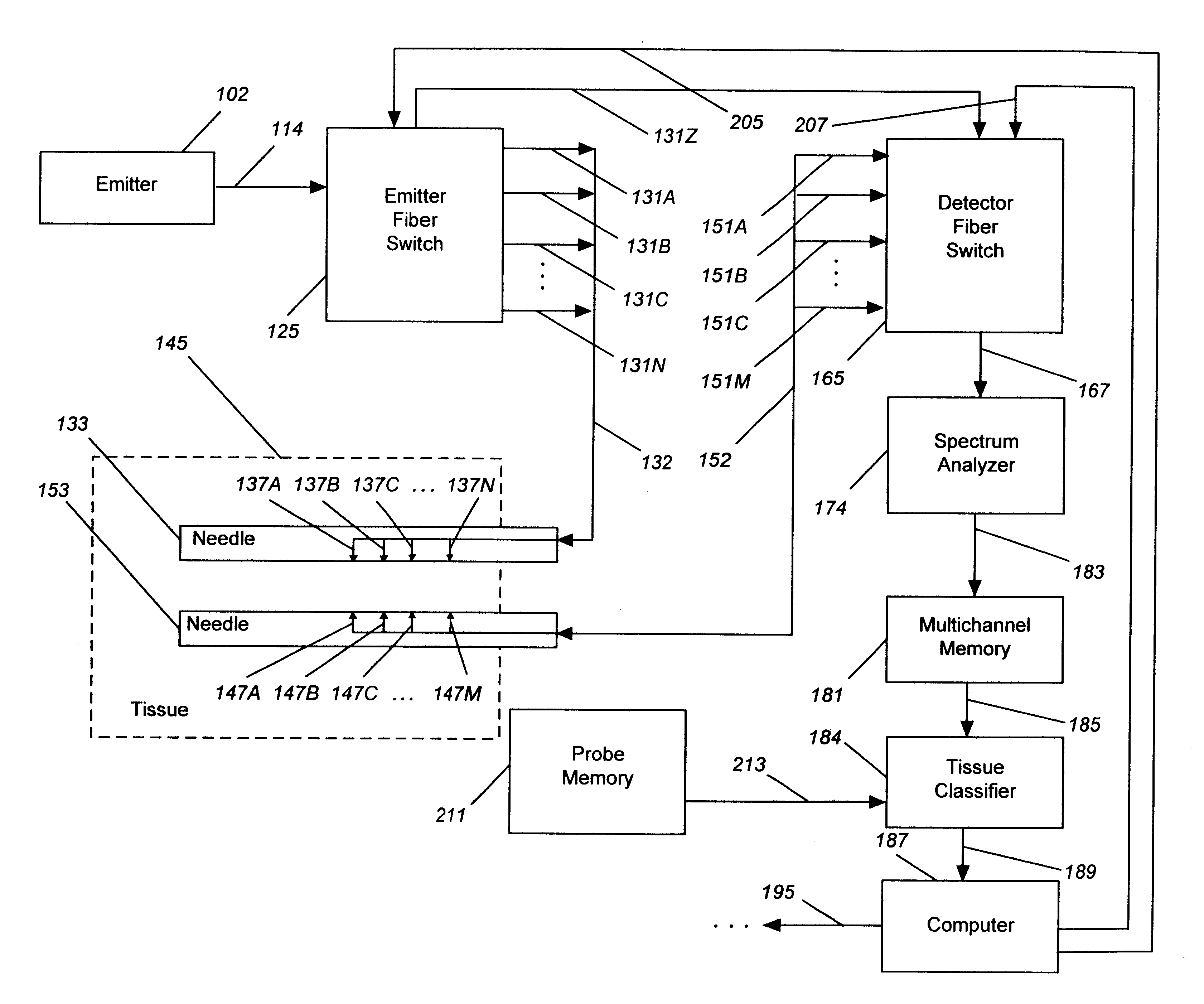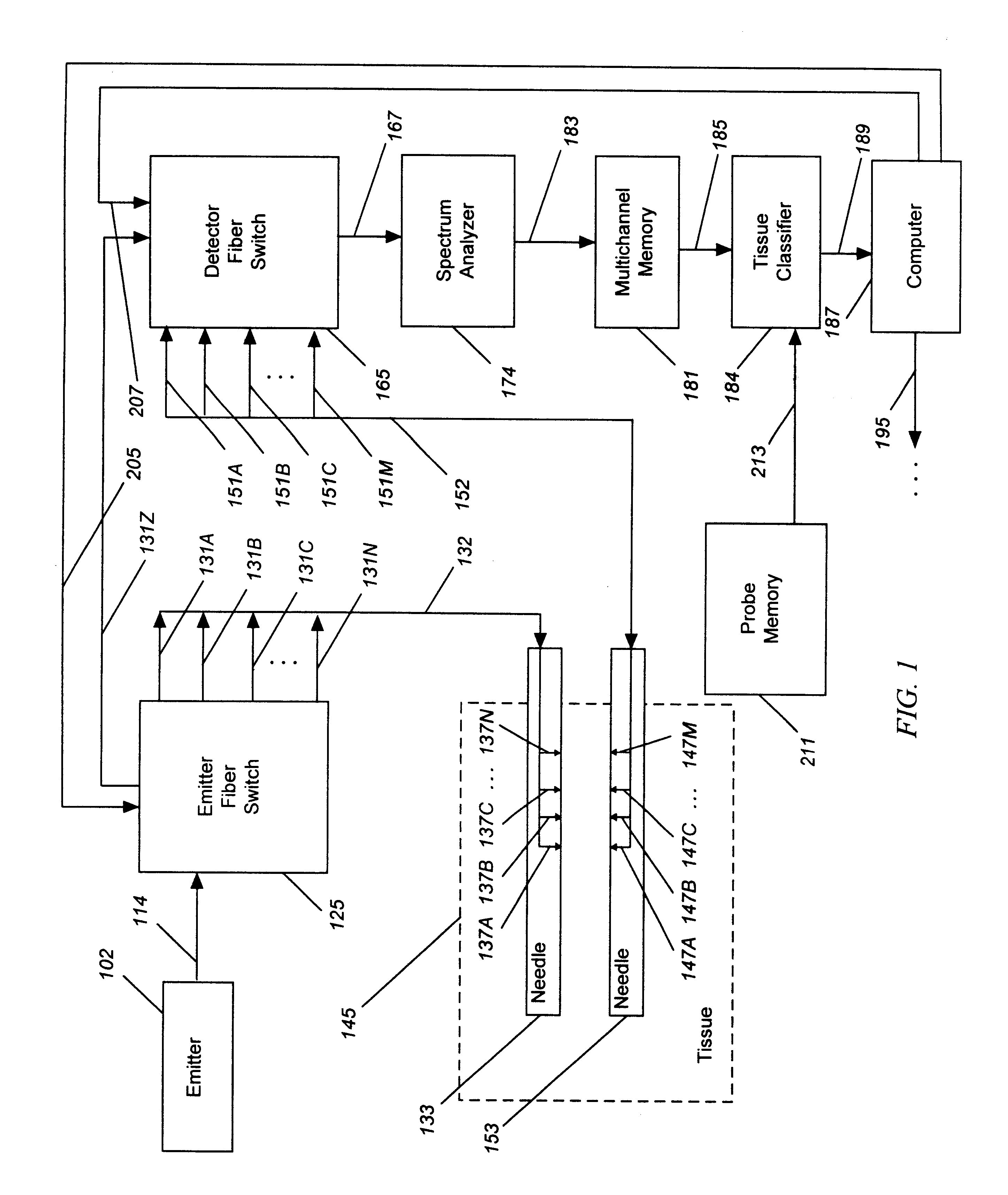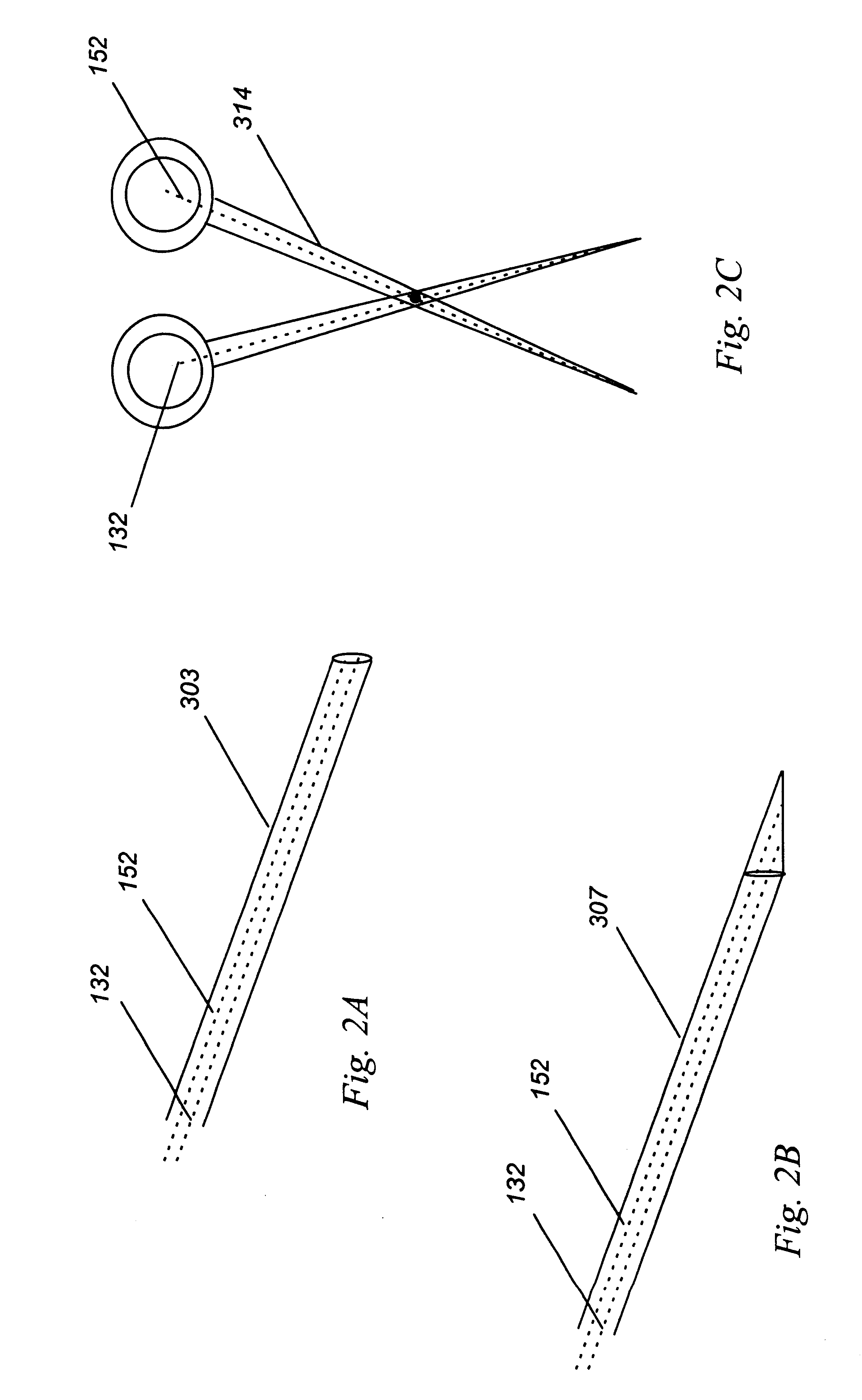Device and method for classification of tissue
a tissue and device technology, applied in the field of tissue classification devices and methods, can solve the problems of large proportion of errors in medicine, high cost, and high cost, and achieve the effects of improving data, enhancing the value of a measurement, and improving data
- Summary
- Abstract
- Description
- Claims
- Application Information
AI Technical Summary
Benefits of technology
Problems solved by technology
Method used
Image
Examples
example 1
Classification of Tissues By Type
Tissue classification can be used to recognize different tissue types. In this experiment, different tissues were measured using the device similar to that shown in FIG. 1, and light was collected from one emitter and detector pair. Optical spectra from muscle and fat are shown in FIG. 5. There are distinct differences in spectra between each tissue shown, for example between muscle 512 and fat 514. These differences allow for a simple discrimination between the tissue types, and several algorithms can be selected to classify the tissue. In this case, the algorithm could be as simple as:
a) if the absorbance peaks at a wavelength over 575 nm, then tissue is fat; or,
b) otherwise, the tissue is not fat.
This method requires use of the entire collected spectrum in order to identity a peak wavelength. The classification is performed by a computer-based classifier, such as classifier 184 in FIG. 1. A more complex algorithm could use the ratio of absorbance ...
example 2
Classification of Tissue Types as an Image
Optical methods can be used to perform imaging (Benaron, U.S. Pat. No. 5,413,098). Tissue classification criteria, taught in the present invention, can then be applied to such images. In this example, image classification has been used to process an optical image of tissue, and then to classify for the presence of a bleed in the brain, or hemorrhage, in the brain of an infant.
To generate this image, we optically monitored the head of a living infant at risk for bleeding using the device shown in FIG. 1 attached using optical headband 352 wrapped around head 362, shown schematically in FIG. 2E and photographically in FIG. 6. Note that in FIG. 6, the infant is receiving heart / lung bypass, so that the oxygenation of the blood leaving the brain can be directly measured by sampling blood from bypass tube 518. Optical image 526 in FIG. 7 was tomographically generated from the optical data collected using the method and device of U.S. Pat. No. 5,41...
example 3
Classification for Detection of Changes in Tissue State
In this example, a change in the state of the tissue is monitored. Freezing, a change of tissue state, can be detected using changes in the optical characteristics of the tissue.
The detection of freezing in a turbid liquid may be important in the monitoring of materials which must be frozen, such as with biologic samples. It may also be important to be able to detect when freezing has been completed, such as use of an optical device to verify that poultry has been filly frozen, in order to minimize time of freezing before removal from a freezing bath, or that human tissue has been adequately frozen during a procedure known as cryosurgery. In cryosurgery, treatment of a cancer or other lesion is achieved by freezing the tumor using a liquid nitrogen filled needle stuck into the tumor. This allows killing of the tumor without having to cutup tissue in order to remove it. This is important if the tumor is in an critical location in...
PUM
| Property | Measurement | Unit |
|---|---|---|
| wavelengths | aaaaa | aaaaa |
| wavelengths | aaaaa | aaaaa |
| wavelengths | aaaaa | aaaaa |
Abstract
Description
Claims
Application Information
 Login to View More
Login to View More - R&D
- Intellectual Property
- Life Sciences
- Materials
- Tech Scout
- Unparalleled Data Quality
- Higher Quality Content
- 60% Fewer Hallucinations
Browse by: Latest US Patents, China's latest patents, Technical Efficacy Thesaurus, Application Domain, Technology Topic, Popular Technical Reports.
© 2025 PatSnap. All rights reserved.Legal|Privacy policy|Modern Slavery Act Transparency Statement|Sitemap|About US| Contact US: help@patsnap.com



